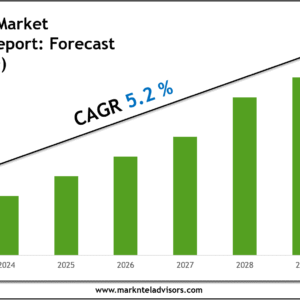Introduction
The world of trading has become more accessible than ever. With the rise of discount brokers, trading apps, and online content, anyone with a smartphone can open a trading account within minutes. But while access has improved, understanding the markets still requires knowledge, strategy, and discipline. That’s where trading courses come in—and they’ve never been more important.
In this post, we’ll explore why trading courses are the smartest investment for beginners in 2025, what you can expect from them, and how to pick the right course for your goals.
1. The Information Overload Problem
If you’ve ever tried to learn trading on your own, you’ve probably felt overwhelmed. There’s no shortage of blogs, YouTube videos, Twitter threads, and Telegram groups offering trading tips. But much of this content is:
- Unstructured
- Confusing
- Inconsistent
- Not beginner-friendly
A proper trading course offers a step-by-step learning path, guiding you from basics to advanced concepts in a logical way. It filters out the noise and gives you a clear roadmap.
2. Trading Is Not Gambling
Many beginners enter the stock market with unrealistic expectations. They think trading is about quick profits, shortcuts, and following hot tips. But real traders know it’s a skill—just like coding, designing, or writing.
Good trading courses emphasize mindset, risk management, strategy building, and patience. They teach you:
- How to avoid overtrading
- How to manage losses
- When to enter and exit a trade
- The importance of journaling and reviewing trades
In short, they help you treat trading like a profession—not a lottery.
3. What Do Trading Courses Teach?
While different courses offer different curriculums, most high-quality trading courses cover:
a) Stock Market Basics
- What are stocks, indices, and exchanges?
- Types of orders (market, limit, stop-loss)
- How to read a market depth window
b) Technical Analysis
- Candlestick patterns
- Chart patterns (triangles, head & shoulders, flags)
- Indicators (MACD, RSI, moving averages)
c) Strategy Development
- Intraday and swing trading strategies
- Risk-reward calculations
- Entry and exit planning
d) Risk Management
- Position sizing
- Capital allocation per trade
- Setting stop-losses and trailing profits
e) Trading Psychology
- Handling fear and greed
- Sticking to a trading plan
- Avoiding emotional decisions
Some courses also include live market sessions, trade reviews, or case studies for hands-on experience.
4. Benefits of Taking a Trading Course
Here’s why a structured trading course is far better than random learning:
| Benefit | Why It Matters |
|---|---|
| Structured Learning | Courses follow a curriculum that builds on foundational concepts |
| Expert Guidance | Learn from experienced traders with real market experience |
| Saves Time | Avoid years of trial and error by learning proven methods |
| Confidence Building | Reduces hesitation when placing trades |
| Risk Awareness | Learn how to protect capital instead of just chasing profit |
5. Online vs. Offline Courses: Which is Better?
Most trading courses today are offered online—but some still prefer offline classrooms. Here’s a comparison:
| Feature | Online | Offline |
|---|---|---|
| Flexibility | Learn anytime, anywhere | Fixed schedule |
| Access | Learn from global experts | Limited to local trainers |
| Cost | Generally lower | Often higher |
| Replays | Watch again as needed | No replays |
| Interaction | Limited live feedback | Better in-person engagement |
If you’re self-motivated and disciplined, online courses offer more flexibility and affordability. But if you prefer live feedback, classroom sessions may suit you better.
6. How to Choose the Right Trading Course
Not all trading courses are equal. Some are led by successful traders. Others are just marketers rehashing public information. Here’s how to filter the good from the bad:
- Check the trainer’s background: Do they trade for a living? Do they share real P&L screenshots or case studies?
- Go through reviews: Look for Google reviews, YouTube testimonials, or student feedback.
- Assess the curriculum: Does it align with your current knowledge and trading goals?
- Look for post-course support: Some courses include live trading rooms or community access.
- Avoid false promises: Stay away from “get rich quick” guarantees or claims of 90% success rates.
7. Cost of Trading Courses: Are They Worth It?
Prices for trading courses vary. Some platforms offer beginner modules for under ₹1,000, while more advanced mentorship programs can cost ₹50,000 or more. Is it worth paying that much?
If a course helps you avoid even one major mistake—like overleveraging or blindly following tips—it could save or earn you thousands. In that sense, trading education is an investment, not an expense.
Final Thoughts
In 2025, trading is easier to start than ever—but harder to master without the right guidance. A proper trading course helps you build a strong foundation, avoid beginner pitfalls, and grow with discipline. If you’re serious about turning trading into a skill, not a gamble, the best thing you can do is invest in your learning first.
Avoid the noise, choose a course that matches your style, and commit to the process. That’s the real trade-off—short-term effort for long-term results.
The search for a good trading course can be both exciting and overwhelming. With hundreds of programs, mentors, YouTube channels, Telegram groups, and online academies promising to make you a successful trader, the options seem endless.

